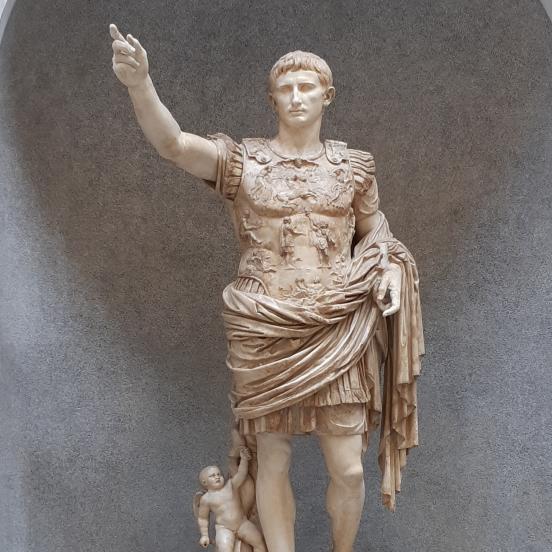Statue of Augustus from Prima Porta
Today one of the most prominent artworks of Roman sculpture is arguably the 2-metre-tall marble statue representing Augustus. It was discovered in the villa of his wife, Livia, at the site of Prima Porta, situated on the northern periphery of Rome. The empress retired to this villa after Augustus’s death (14 A.D.); thus the statue at Prima Porta was probably made following his passing away. However, a bronze statue sculpted around the middle of Augustus’s reign and erected in a public building could have been the original composition, which served as a model for the marble statue. The work also refers to a political event: the scene decorating the cuirass shows the Parthians returning the Roman military standards they had earlier captured. The event took place in 20 B.C. and therefore that is regarded as possibly the earliest date of modelling the bronze statue. The proportions and body posture of the emperor’s standing figure are based on the famous statue of the Spear-bearer by the Greek sculptor Polykleitos, who lived in the 5th century B.C., but it was regarded as the main artistic model in the age of Augustus. Yet the sculptor dressed the nude figure of an athlete in military clothing and changed the head to a portrait of Augustus by modelling his individual features. Due to that, the Augustus statue of Prima Porta corresponds to the emperor’s portrait type, which took formed around 27 B.C. It presents a masterly synthesis between the features of an individual and an abstract ‘ideal’ version of a man’s face.

